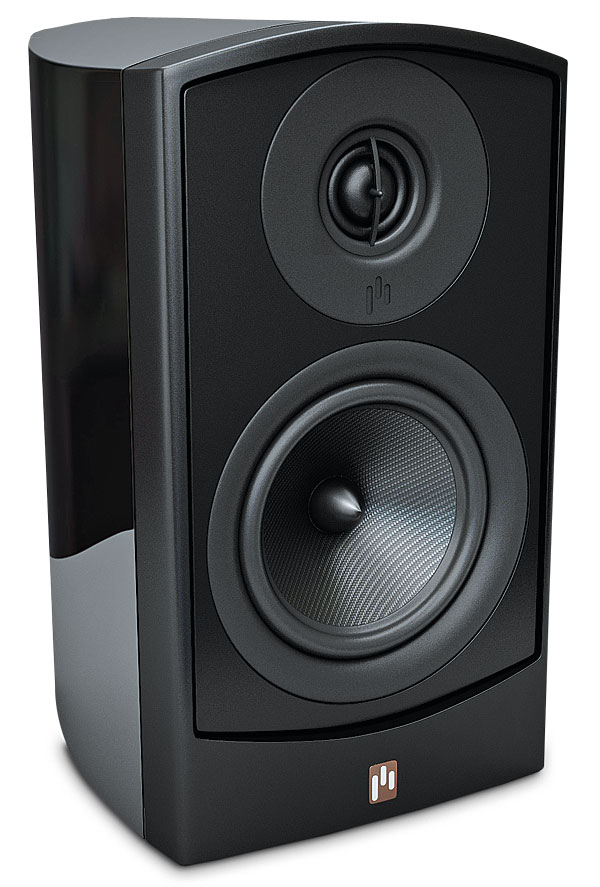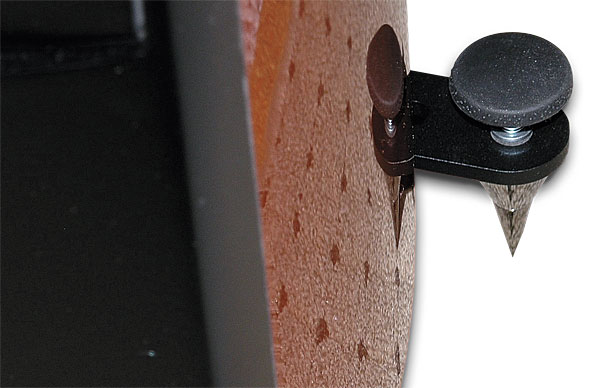Have you guys looked at the bookshelf versions of these. I would expect similar performance. Any thoughts?
Aperion Verus Grand Speaker System Page 3
Perhaps most impressive was how well the center matched the timbre of the towers. Of course, no center speaker can ever be a perfect match to its left- and right-channel siblings. Even if it’s exactly the same model (possible only for multichannel music without a screen, or with a perforated screen—which can create other response issues), its acoustic environment will be slightly different. I haven’t yet seen our formal test bench results for the Aperions (apart from my own in-room measurements). While I suspect they will show some response differences in the tower and center—they always do—the audible blend of the three front speakers was as good as any I’ve experienced in my room. Whether the sound was the side-to-side pan of a train, plane, or automobile, or the panned dialogue sometimes used in films, the Verus Grand Center rarely sounded discernibly different than the left/right Verus Grand Towers.

The uniformity of the front soundfield was also a factor in the Verus’ exceptional performance on film scores. With music as wide-ranging as Howard Shore’s incredible orchestral and choral work for the Lord of the Rings films, Elton John’s sassy music for Gnomeo & Juliet, and Broadway adaptations such as the recently released restoration of Fiddler on the Roof (the limitations of its 40-year-old audio obvious but not intrusive), the Aperions produced a huge, expansive, cohesive soundstage that many speakers at twice the price might envy.
Of course there’s also the bling of any self-respecting action soundtrack: bing, bang, and boom. Given that few of us know the sound of a real 12-car pileup, a major firefight, or things blowing up real good—or want to—the most we can say about a home theater setup is whether or not it sounds like we expect such chaos to sound. The Aperions do. They never gave up, never surrendered. And if they occasionally do sound bright around the edges on hyperactive soundtracks played back at high levels (think Michael Bay in Imax), do you really expect the sound of shattered glass, tearing metal, or an alien invasion bent on the violent end of humanity and reality TV as we know it to sound pretty? I thought not.
Verus Musicus 2.0 and 2.1
The Verus Grand Towers continued to impress me on two-channel music. They aren’t shrinking violets at the top end, and they suffer overly bright music recordings even less gladly than they do bright soundtracks. I wouldn’t be surprised to find that our quasi-anechoic measurements show a small bump up somewhere in the low- or mid-treble, but I doubt it would be significant. The Verus Grand Towers’ reproduction of detail was exceptional on good source material. With everything from the gentle sound of a brushed cymbal to the liveliness of a good vocal recording, they left little or nothing on the table. Imaging and depth (when captured in the recording) were also consistently convincing.
My rudimentary in-room measurements at a centered listening position showed that the towers, sans sub, had a smooth response from about 250 Hz to 10 kHz, with a small but notable ripple—mostly a dip—centered at around 1.6 kHz (close enough to the specified 1.8-kHz mid/tweeter crossover frequency to suggest that the source of the ripple lay there). Above 10 kHz, the response rolled off smoothly. The left- and right-channel spectral match was surprisingly tight for in-room measurements.

At lower frequencies, there was a bit of unevenness, evident more in the in-room measurements than in listening, between 50 Hz and 100 Hz. The response below 50 Hz rolled off fairly rapidly. But of all a speaker’s qualities, its audible bass response is the one least likely to be consistent from any reviewer’s room and setup to yours. That said, two-channel listening to the towers by themselves in my room showed them to have respectable audible bass for their size, particularly on instruments that don’t extend much below 40 Hz (a bass drum, for instance). Adding a good subwoofer cleaned up the midbass, increased the clarity at high levels by easing the demand on the towers’ own woofers, and extended the very low bass response. The latter is perhaps most significant on soundtracks, but it can be important on synthesizer- or organ-heavy music as well.
Verus Exodus
Will the direct-purchase paradigm that Aperion features come to dominate the future of the audio market? I suspect not. Much like the contraction of book and record stores, not everyone will welcome losing the ability
to shop around and compare multiple options. Or losing the fun of prowling the audio shops on a lazy Saturday afternoon, hopefully to eventually give one of those dealers your business. We’re all restless explorers at heart.
I suspect that direct and conventional sales channels will continue to coexist. Even if the latter increases costs to the buyer, the product that will serve your personal needs best over its 5-, 10-, or even 20-year lifetime isn’t always the one that appears to offer the most bang for the buck.
But it could be, and Aperion certainly hopes that it works out that way for you. If the result is a speaker system that impresses you as much as the Verus Grand impressed me, you’ll ultimately be a winner.
- Log in or register to post comments































































